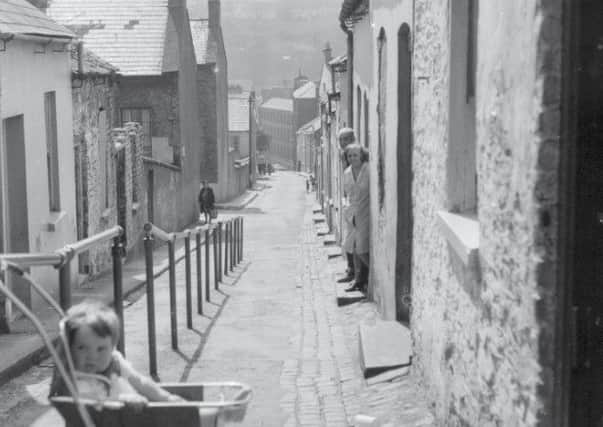City interface now ahistoric tourist draw


The new images, which have been erected on the interface near Londonderry city centre, were unveiled recently during the Winter Market.
‘The Panel Project’, funded by the International Fund for Ireland (IFI), has been produced in partnership with the Cathedral Youth Club, the Peace Walls Project and the Gasyard Development Trust.
Advertisement
Hide AdAdvertisement
Hide AdThe panels depict the history of the Fountain and Bishop Street areas and it is hoped will become a tourism attraction in the city.
IFI representative, Sophie Blake-Gallagher, said: “The Peace Walls Project was entirely resident led.
“The panels are as a result of residents guiding our work through consultation by the Peace Walls Project and the Housing Executive.
“We have delivered a set of panels that will be an asset to the tourism industry in Derry-Londonderry.
Advertisement
Hide AdAdvertisement
Hide Ad“These panels reimage the wall and acknowledge everyone’s shared history.”
The Housing Executive’s Good Relations Officer, Eddie Breslin, said: “These panels are an example of what can happen when community groups from both sides of the interface can work together to set an example to residents whilst delivering an asset to the tourism strategy of the city.”
The panels feature both Wapping Lane and St Columb’s Cathedral.
The panel on the former explains: “This area was normally frequented by sailors and maritime traders. It first appeared on Porter’s map of 1799 as Meeting House Lane, which then became Wapping Lane in 1851. The name may come from a similar area in London associated with the nearby River Thames.
Advertisement
Hide AdAdvertisement
Hide Ad“During the mid-twentieth century hundreds of shirt-factory girls would have made their way down Wapping Lane every morning to answer the call of the factory horn.”
It concludes: “Sinclair’s factory building still stands at the very bottom of the lane where it meets Abercorn Road. it remains the main access from the Fountain to Craigavon Bridge.”